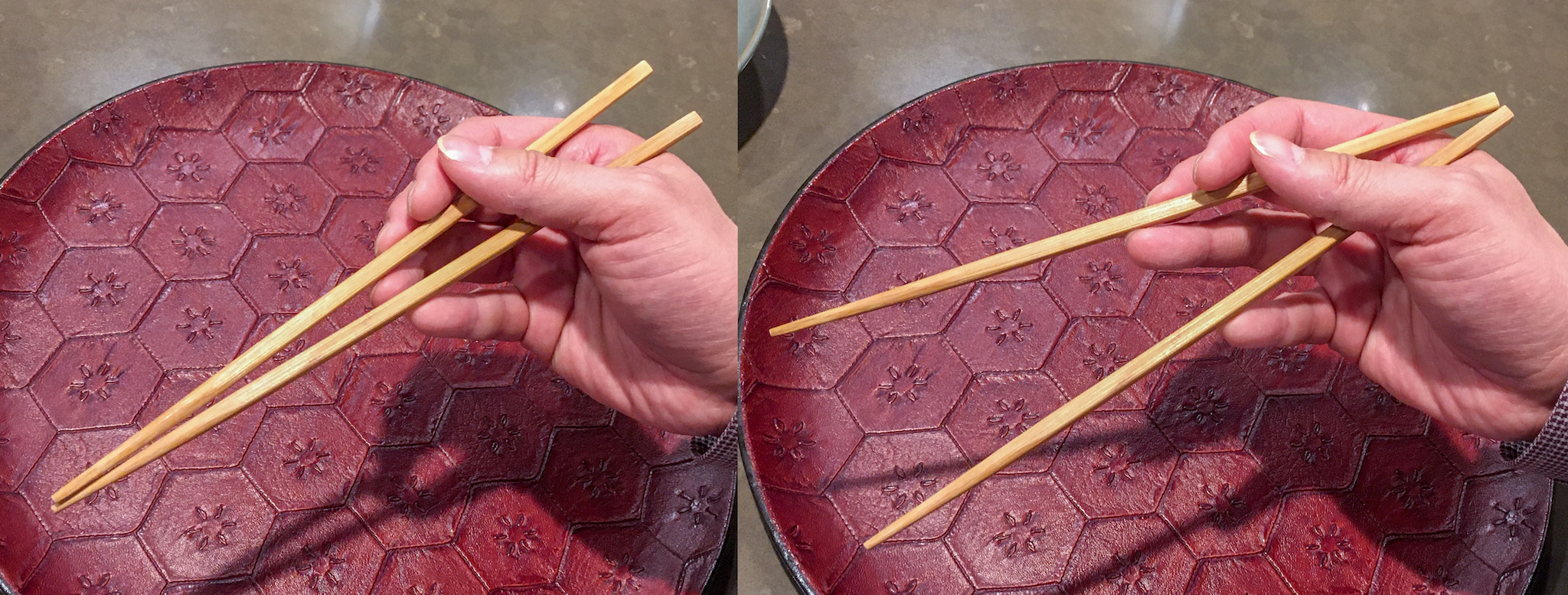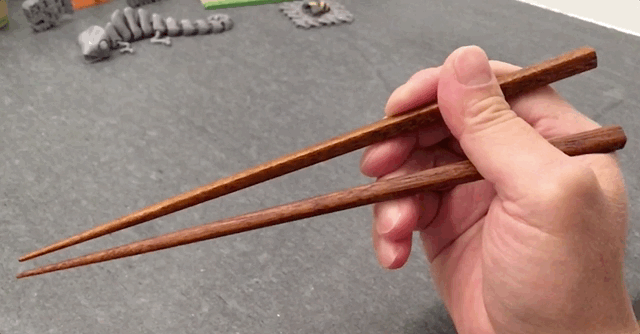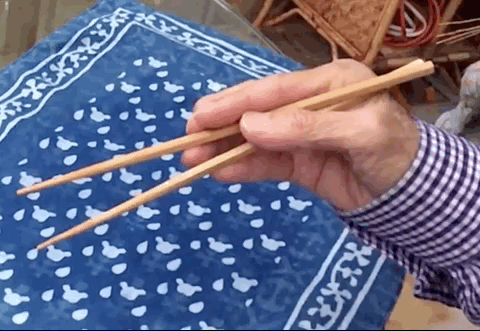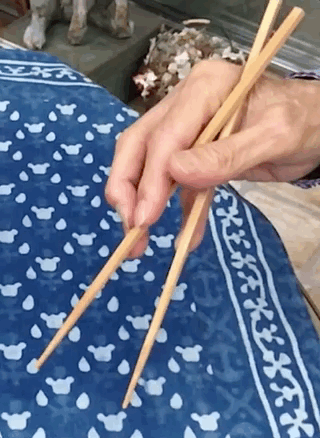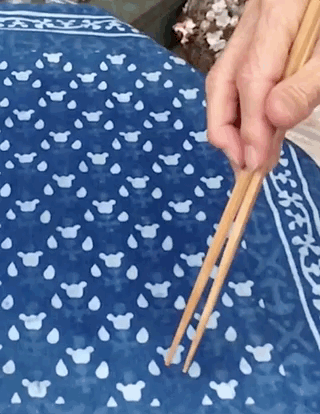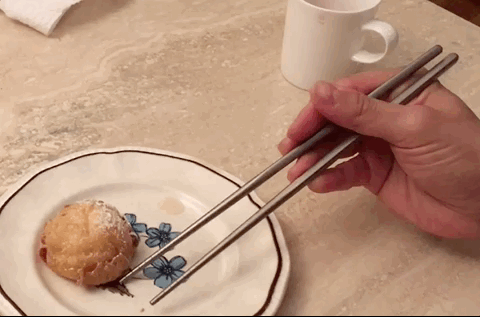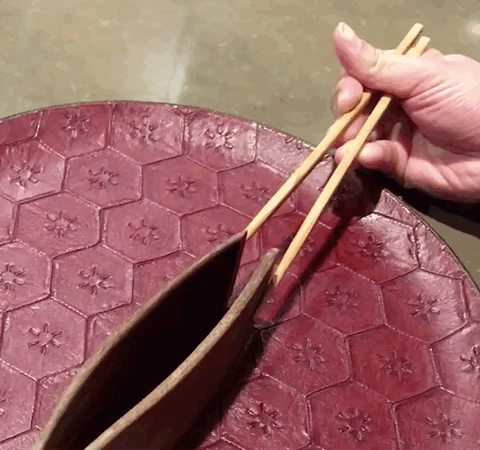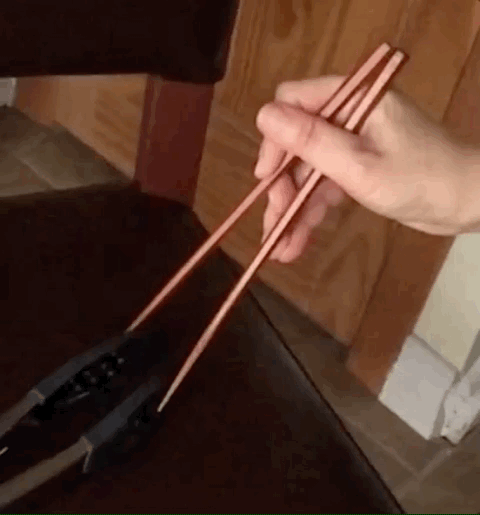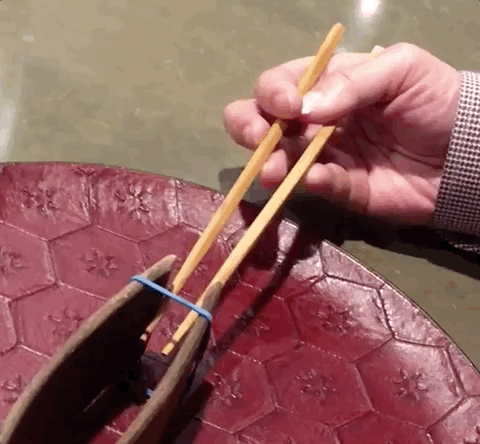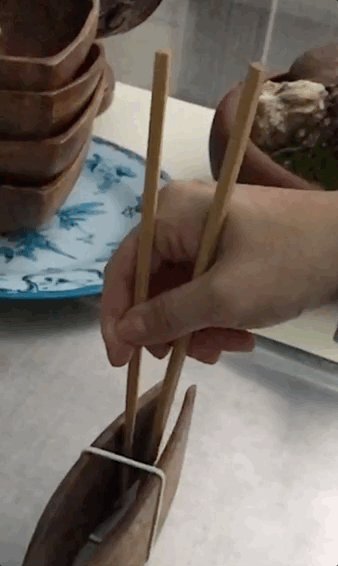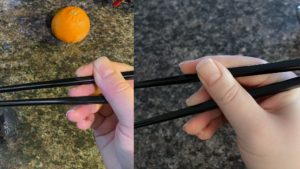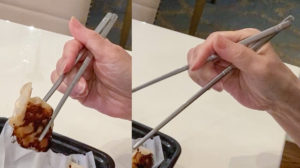Last Updated on 2021 年 06 月 30 日 by 編輯
Table of Contents
Forsaken Pinky vs. Standard Grip
The Forsaken Pinky grip is named after the lone pinky finger, which is left to its own devices by the rest of fingers.
In Standard Grip, as illustrated below to the right, the index finger and the middle finger man the top chopstick. At the same time, the ring finger secures the bottom chopstick, with the pinky as a freeloader. In contrast, Forsaken Pinky has the ring finger desert the bottom chopstick, to join the top chopstick gang – the index finger and the middle finger. This leaves the task of holding the bottom chopstick to the pinky alone, shown below to the left.
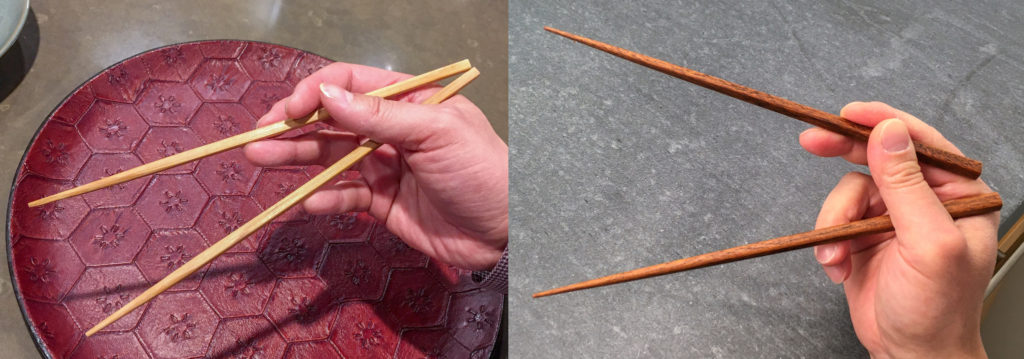

Forsaken Pinky vs. Vulcan Grip
This alternative grip looks, at a glance, like the Vulcan Grip, shown below to the right. Both grips leverage finger pulps, instead of distal knuckles as is the case with Standard Grip. The difference between these two alternative grips boils down to which fingers provide pulp support to the two chopsticks. In Forsaken Pinky (below left), the middle finger pulp supports the top chopstick, and the pinky finger pulp supports the bottom chopstick. In Vulcan Grip (below right), the index finger and the middle finger take up these two tasks, respectively.
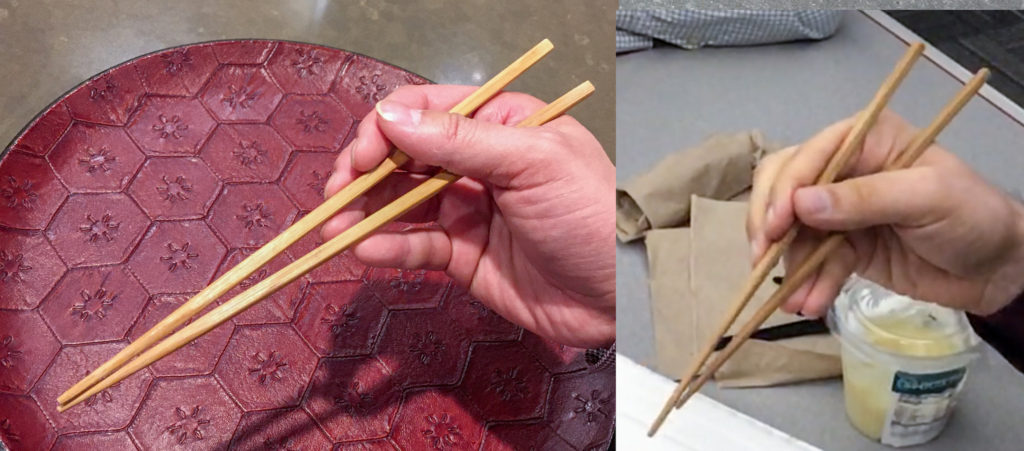

Lack of power and dexterity
Forsaken Pinky suffers from the same lack of power, precision, dexterity and speed, as Vulcan Grip, with respect to the manipulation of the top chopstick. Similarly, the bottom chopstick is never well-secured in Forsaken Pinky, just like it is not well-secured in Vulcan Grip. Only a small tip surface of the pulp is used to support the bottom chopstick in both grips. Videos below compare Forsaken Pinky to Standard Grip to illustrate the drastic difference in dexterity and speed.
Forsaken Pinky is difficult to wield while chopsticks are held horizontally. The video shown below illustrates that it is difficult even for a lifelong user.
This grip appears to be easier to wield, when chopsticks are held vertically. The same user demonstrates the alternating motion using Forsaken Pinky, shown below.
Extending chopsticks open is much harder than closing them with Forsaken Pinky. Often fingers lose their grip on the sticks. And user then briefly rests tips of chopsticks on the table to regain proper grip, as shown below.
It may seem odd that snapping at thin air as depicted above is hard for some lifelong users. But this apparent lack of dexterity does not usually pose real problems in eating situations. A user of Forsaken Pinky can usually place tips of chopsticks against a food item or the plate its on, then pry chopsticks open against them.
Picking up food
Shown below is a video of a user picking up a cream puff. Pay attention to the ring finger. It distances itself from the top chopstick, as the middle finger pushes down to grab the puff. To let go of the puff, the ring finger comes back to the top chopstick. The ring finger pushes up against the top chopstick, prying it away from food.
The grabbing sequence is depicted by the three pictures shown below. The middle finger is seen pressing down on the top chopstick. The ring finger isn’t needed at this stage, and it departs the top chopstick.

Pictures below depict the user letting go of the cream puff. The ring finger comes back to the top chopstick. It bumps the top chopstick up, against the middle finger. The top chopstick is thus held by the middle finger and the ring finger.

Closing salad tongs
Forsaken Pinky also shares something in common with Idling Thumb, and all alternative grips that derive from Idling Thumb, such as Chicken Claws, Dangling Stick, Muppet Grip, etc. That is, Forsaken Pinky does not actually make use of the pulp of the thumb, despite the apparent look of it being used in the alternating motion shown above, between the closed posture and the open posture.
While a user of Forsaken Pinky snaps chopsticks against thin air, this lack of engagement of the thumb pulp is difficult to detect. However, when put to the salad tongs tests, Forsaken Pinky’s disregard of the thumb becomes obvious. Compare the video of Forsaken Pinky closing salad tongs (below left) to that of Idling Thumb (below right), so see the similarity.
Note how the tip segment of the thumb is not used to maneuver the top chopstick at all, in either one. As a result, those nice and graceful postures shown earlier of Forsaken Pinky are no longer. In order to close chopsticks with medium compression force, the hand now resorts to pinching both sticks close, between the index finger and the purlicue, as illustrated below. In the final closed posture, the rear ends of chopsticks are incorrectly touching, unlike how they were separated apart at the closed posture in earlier pictures.
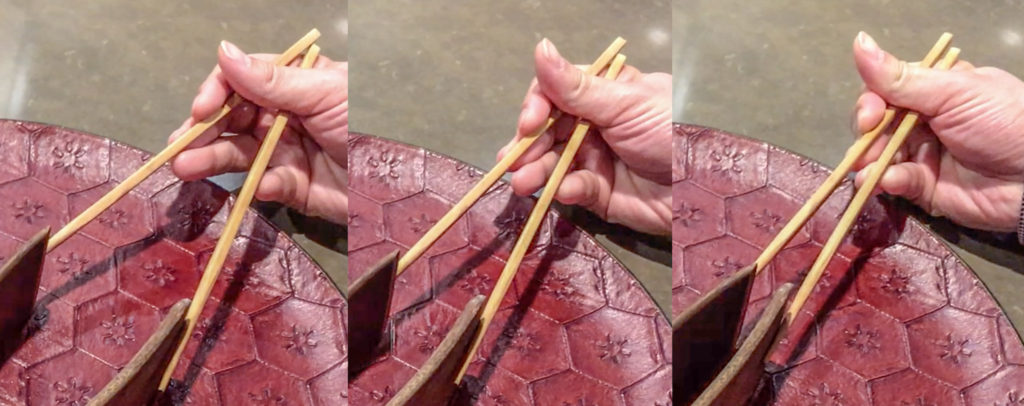
For comparison, below is an equivalent sequence of Forsaken Pinky movements from earlier in this post, when zero compression forces are required to close chopsticks. These nice postures almost look like Weak Standard Grip, were one to overlook the ring finger, the pinky, and their shifted duties.

Prying open salad tongs
When attempting to pry open salad tongs, users of Forsaken Pinky resorts to at least two different strategies, to compensate for the lack of extension power in this grip. The first strategy is similar to that of Chicken Claws. The thumb is moved down, to try to pry the bottom chopstick away from the top one.
Alternatively, a user may enlist the help of the ring finger, instead of drafting the thumb. This relies on the tip of the thumb pushing the top chopstick up, while the tip of the ring finger pushes the bottom chopstick down. It is similar to one of several coping mechanisms of Weak Standard Grip, when faced with extension challenges. The video shown below to the right illustrates a strategy that turns Weak Standard Grip into Vulcan Grip. The Forsaken Pinky user shown below to the left adopts similar Vulcan Grip, after an unsuccessful attempt to emulate Chicken Claws.
Learn new grips
There you have it. The Forsaken Pinky grip – an OK alternative grip, if that is what you use.
Users of Forsaken Pinky can add Standard grip to their chopsticking repertoire, by learning to better make use of the tip segment of the thumb, to help twirl the top chopstick. Simply call the ring finger back to its duty – securing the bottom chopstick. And, yeah, leave the pinky alone.
Learn to twirl chopsticks, if you are interested.
Taiwanese: 放捒尾指
This grip is known as 放捒尾指 (Pàng-sat bóe-cháiⁿ) in Taiwanese.
Japanese: 孤児
「孤児」という命名は、箸の持ち方の中では、実は小指の役割は
ありません。「そっと薬指の陰に隠れている」だけです。
その薬指さえも小指を見放してしまって、家族と別れ別れに
なってしまったので「孤児」と命名しました — 榊原 安英
